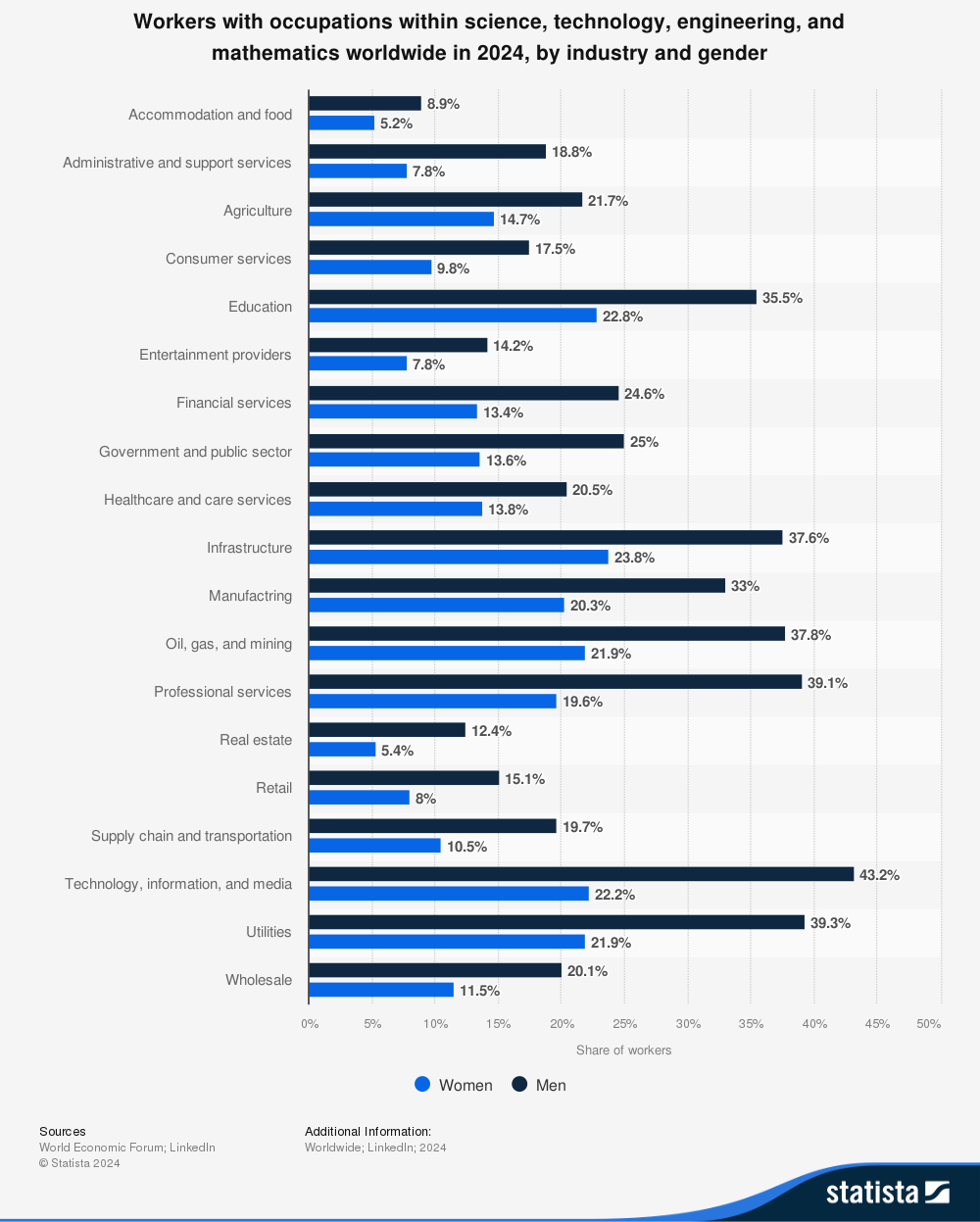The Gender Gap in STEM
The Gender Gap in STEM
Despite significant advancements in gender equality, girls and women remain underrepresented in STEM (Science, Technology, Engineering, and Mathematics) fields worldwide. According to UNESCO, less than 30% of researchers in STEM are women and the percentage is even lower in certain sectors such as engineering, computer science, and physics (UNESCO Institute for Statistics).
This gap has long-term effects that not only limit individual opportunities, affecting women's career opportunities, and financial independence, but also impact innovation, societal progress, and the diversity of ideas in STEM industries. When women are not equally involved in STEM, we lose out on a diversity of perspectives, ideas, and potential solutions to some of the world's most pressing problems. Diverse teams are more likely to introduce innovative ideas, leading to advances in technology and science that benefit everyone.
The image below shows how, worldwide, there are more men than women working in the fields of science, technology, engineering and mathematics (STEM) in all sectors. For example, in 2024, in Utilities, almost 40 percent of men were working with STEM, compared to just over 20 percent of women (World Economic Forum & Statista, 2024).

There are no comments for now.
